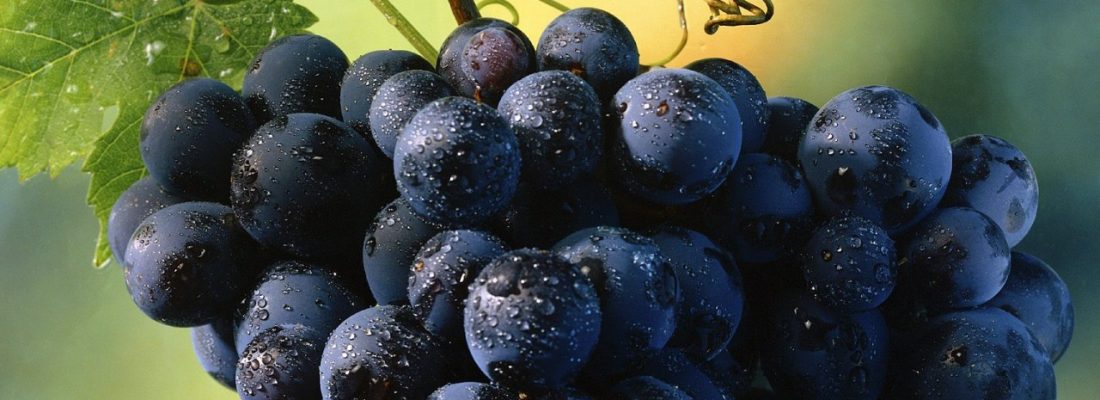
LIFE ON THE VINE
LIFE ON THE VINEThe raisins are hard to work for, but the results are sweet. It takes at least three full years to produce a single raisin, from the time a grape vine is planted to its first yield. LIFE ON THE VINE. Grapevines must be tended by hand and demand constant attention all year. In January, vines are carefully pruned to allow the “canes,” the most productive branches, to grow. After pruning, the canes are hand-tied to rows of wire four to five feet off the ground. Buds first appear towards spring. By March and early April the sun draws out tiny grape clusters. These clusters will grow and plump in the hot valley sun all summer under the watchful eyes of farmers. Since vines need large amounts of water to bear fruit, farmers heavily irrigate to soak the roots to a depth of three to five feet throughout the growing season. Miles and miles of irrigation pipes and pumps provide ample water to the vines in temperatures that can reach over 110 degrees Fahrenheit. By late August, the lush, heavy and ripe grapes are ready to become raisins. Skilled farm workers gently hand-pick the grape clusters and lay them on clean paper trays between the rows of vines. During the two to three week drying period, the grapes are turned to make sure they receive enough sun to become dark sun-dried raisins. When the moisture content is about 15 percent, the trays are carefully rolled into bundles for protection from the weather. After drying for several more days, the bundles are opened and emptied into field bins ready to be taken to the farmer’s yard. There they are loaded onto a vibrating conveyor belt that separates the larger stems from the raisins. The raisins are then put into large wooden bins that help equalize the moisture between the raisins. The bins are stacked and covered to warm the raisins and allow the drier raisins to draw moisture from the juicier raisins. The bins of raisins are then trucked to various packing plants throughout the Valley. |
Grapevines are pruned for best production Canes are neatly hand-tied to wire rows Grape buds first appear in early spring Thompson seedless grapes grow into luscious bunches Grapes bursting with sugar are hand-picked Grape clusters are laid on rows of paper trays to dry The raisins are rolled into bundles to continue drying and for protection Bundles of dry raisins are emptied into |
LIFE ON THE VINEThe raisins are hard to work for, but the results are sweet. It takes at least three full years to produce a single raisin, from the time a grape vine is planted to its first yield. LIFE ON THE VINE. Grapevines must be tended by hand and demand constant attention all year. In January, vines are carefully pruned to allow the “canes,” the most productive branches, to grow. After pruning, the canes are hand-tied to rows of wire four to five feet off the ground. Buds first appear towards spring. By March and early April the sun draws out tiny grape clusters. These clusters will grow and plump in the hot valley sun all summer under the watchful eyes of farmers. Since vines need large amounts of water to bear fruit, farmers heavily irrigate to soak the roots to a depth of three to five feet throughout the growing season. Miles and miles of irrigation pipes and pumps provide ample water to the vines in temperatures that can reach over 110 degrees Fahrenheit. By late August, the lush, heavy and ripe grapes are ready to become raisins. Skilled farm workers gently hand-pick the grape clusters and lay them on clean paper trays between the rows of vines. During the two to three week drying period, the grapes are turned to make sure they receive enough sun to become dark sun-dried raisins. When the moisture content is about 15 percent, the trays are carefully rolled into bundles for protection from the weather. After drying for several more days, the bundles are opened and emptied into field bins ready to be taken to the farmer’s yard. There they are loaded onto a vibrating conveyor belt that separates the larger stems from the raisins. The raisins are then put into large wooden bins that help equalize the moisture between the raisins. The bins are stacked and covered to warm the raisins and allow the drier raisins to draw moisture from the juicier raisins. The bins of raisins are then trucked to various packing plants throughout the Valley. |
Grapevines are pruned for best production Canes are neatly hand-tied to wire rows Grape buds first appear in early spring Thompson seedless grapes grow into luscious bunches Grapes bursting with sugar are hand-picked Grape clusters are laid on rows of paper trays to dry The raisins are rolled into bundles to continue drying and for protection Bundles of dry raisins are emptied into |
.jpg)
.jpg)
.jpg)
.jpg)
.jpg)
.jpg)

.jpg)